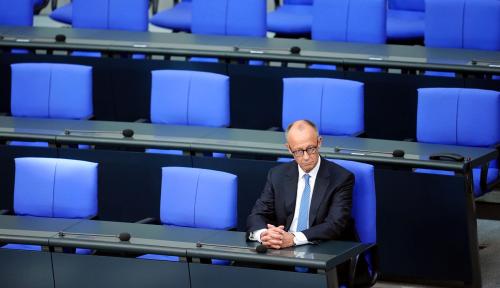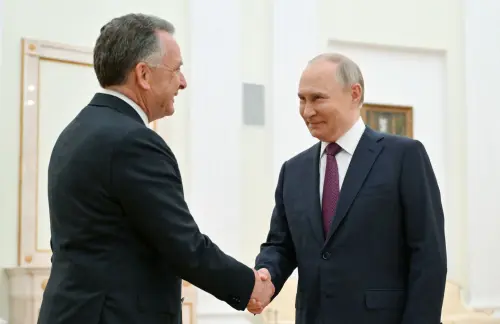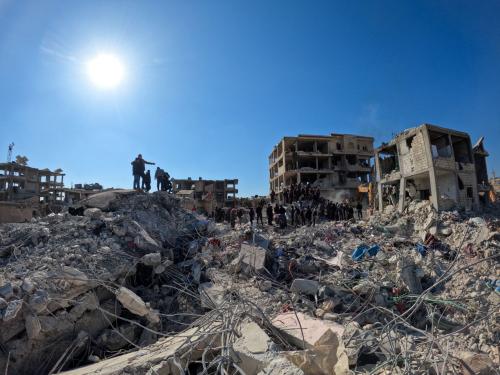Ukrainians went to the polls on May 25 to elect a new president. While armed separatists prevented many in the eastern oblasts (provinces) of Donetsk and Luhansk from voting, the election proceeded normally in most of the country. Some 60 percent of the electorate took part in an election that received good marks from the Organization for Security and Cooperation in Europe (OSCE) election-monitoring mission. Billionaire Petro Poroshenko won with about 55 percent of the vote.
Mr. Poroshenko faces tough challenges. He must reach out to eastern Ukraine, implement needed economic reforms and oversee some decentralization of power away from Kyiv. And he must deal with Russia. No one said the job was going to be easy.
Ukraine’s Presidential Elections
The May 25 presidential election has important implications for Ukraine. Since former president Viktor Yanukovych left his post and fled Kyiv (and Ukraine) at the end of February, many Ukrainians, particularly in the east, have seen the acting government as illegitimate. Sunday’s election will put in office a president with a renewed democratic mandate. That should be a big plus.
The election proceeded normally in most of the country. Sixty percent of the electorate voted, an impressive number given that armed separatists in Donetsk and Luhansk—where about 14 percent of Ukraine’s voters reside—prevented voting in most precincts in those oblasts. On May 26, the OSCE election-monitoring mission released its preliminary assessment; while noting some problems, it concluded that the election was “largely in line with international commitments … in the vast majority of the country.”
Exit polls released the evening of May 25 agreed that Mr. Poroshenko won with 55 percent of the vote. The Central Electoral Commission reported on May 27 that, with 97 percent of the protocols from polling stations counted, Mr. Poroshenko had received more than 54 percent. Crossing 50 percent is important, as it means there will be no need for a run-off in three weeks’ time.
Challenge 1: Calming the Conflict in Eastern Ukraine
Mr. Poroshenko will soon be sworn in as Ukraine’s president. Eastern Ukraine poses the first of several difficult challenges. Dozens have died in clashes between Ukrainian military and security forces and armed separatists in Donetsk and Luhansk over the past month, including in an extended May 26 firefight at the Donetsk airport. Mr. Poroshenko has said his first trip as president will be to Donetsk. His election should lift some of the cloud of illegitimacy that, rightly or wrongly, has hung over the acting government in Kyiv. He needs to assure the population in the east that he will listen to and address their political and economic concerns. If he succeeds in doing that, he can undercut support for the armed separatists, whose welcome may already be wearing out with local Ukrainians.
Challenge 2: Implementing Economic Reforms
Mr. Poroshenko’s second challenge will be implementing the economic reforms to which Ukraine agreed in order to receive $17 billion in low-interest loans from the International Monetary Fund over the next two years. The reforms are necessary to put the country’s economic house in order and allow it to pursue a normal growth path, as well as end rampant corruption. But the reforms will hurt many households across the country. Mr. Poroshenko will need to find a way to sustain public support for pursuing those reforms, a difficult political test.
Challenge 3: Decentralizing Political Power
The third challenge is decentralizing Ukraine’s government, in which too much authority rests in the capital. Transferring some political power to the oblasts—such as making governors elected as opposed to appointed by the president—would promote more effective, efficient and accountable governance. It would also address demands in the eastern part of the country for more local authority.
Mr. Poroshenko has said that he would like to see early Rada (parliamentary) elections later this year. That would be a wise move, as it would revalidate the Rada’s democratic authority in the aftermath of February’s turmoil.
Relations with the EU and Russia
Mr. Poroshenko has indicated his desire to bring Ukraine closer to the European Union, which presumably includes signing a Ukraine-EU association agreement that includes a deep and comprehensive free trade arrangement. Opinion polls show that a majority of Ukrainians supports that course, though it is not that popular in the eastern part of the country. The other problem is that Vladimir Putin and the Kremlin have adamantly opposed Ukraine’s pro-Europe course, which would remove the country from Russia’s sphere of influence. The acting Ukrainian government’s reaffirmation of a pro-Europe course in late February triggered Russia’s illegal seizure and annexation of Crimea.
On May 23, Mr. Putin said he would respect the results of the election. If Moscow is now prepared to deal directly with Kyiv in a normal manner and cease its support for the separatists who have created chaos in Donetsk and Luhansk, that would be a positive step. But some skepticism is in order: this would amount to a total reversal in Russia’s course over the past three months—and it is not clear why the Kremlin now would decide to do that.
Kyiv, the United States and European Union will watch closely to see how Russia deals with Mr. Poroshenko in the coming days and weeks. Will Moscow urge the separatists in eastern Ukraine to lay down their arms? And how will the two countries handle the question of Russia’s sale of natural gas to Ukraine? They disagree on price, and Moscow has said that Ukraine will have to prepay for gas purchases beginning in June.
Mr. Poroshenko scored a big win on May 25—by far the biggest margin of victory ever in a Ukrainian presidential election. He will soon begin the hard part: governing and taking on the tough domestic and foreign policy challenges that confront Ukraine.
The Brookings Institution is committed to quality, independence, and impact.
We are supported by a diverse array of funders. In line with our values and policies, each Brookings publication represents the sole views of its author(s).



Commentary
Ukraine’s President-Elect Poroshenko Faces Three Tough Challenges
May 27, 2014